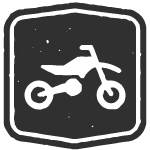Phone: (801) 627-0077 Toll Free: (800) 966-9900

Hiking


TRAVEL RESPONSIBLY
- In open country where there are no trails, spread out when hiking. Spreading out, rather than following each other’s footsteps, disperses impact and avoids creating a new trail.
- Travel responsibly on designated roads, trails and areas.
- Stay on the trail even if it is rough and muddy.
- Walking on the track edge and cutting switchbacks increases damage, causing erosion and visual scarring.
- Walk single file to avoid widening the trail.
- Spread out in open country where there are no trails. Spreading out, rather than following each other’s footsteps, disperses impact and avoids creating a new trail.
- Flagging and marking trails is unsightly. If flagging is necessary, remove it as you leave. Consider using a Global Positioning System (GPS) instead of flagging.
- Comply with all signs and respect barriers.
- Buddy up with two or three hikers, reducing vulnerability if you have an accident.
RESPECT THE RIGHTS OF OTHERS
Respect the rights of others, including private property owners, all recreational trail users, campers and others so they can enjoy their recreational activities undisturbed.
- Be considerate of others on the road or trail.
- Leave gates as you find them.
- Proceed with caution around horses and pack animals. Sudden, unfamiliar activity may spook animals, possibly causing injury to animals, handlers, and others on the trail.
- When encountering horses on the trail, move to the downhill side of the trail, stop, and ask the rider the best way to proceed.
- Keep your pets under control; this protects your pet, other recreationists and wildlife.
- If crossing private property, be sure to ask permission from the landowner(s).
- Keep the noise down.
EDUCATE YOURSELF
Educate yourself prior to a trip by obtaining travel maps and regulations from public agencies, planning for your trip, taking recreation skills classes and knowing how to operate your equipment safely.
- Obtain a map of your destination and determine which areas are open to your type of travel.
- Make a realistic plan and stick to it. Always tell someone of your travel plans.
- Contact the land manager for area restrictions, closures and permit requirements.
- Check the weather forecast for your destination. Plan clothing, equipment, and supplies accordingly.
- Carry a compass or a GPS unit and know how to use it.
- Carry water and emergency supplies even on short hikes.
- Choose appropriate footwear for the terrain. Solid, lightweight hiking boots are best. Sandals can be used on trails in summer and around your campsite.
- Dress in layers and always carry a jacket. Weather conditions can change unexpectedly.
- Your pack weight should not exceed one third of your body weight.
AVOID SENSITIVE AREAS
Avoid sensitive areas such as meadows, lakeshores, wetlands and streams. Stay on designated routes.
- Other sensitive habitats to avoid include cryptobiotic soils of the desert, tundra and seasonal nesting or breeding areas.
- Do not disturb historical, archeological or paleontological sites.
- Avoid “spooking” livestock and wildlife you encounter and keep your distance.
- Motorized and mechanized vehicles are not allowed in designated Wilderness Areas.
DO YOUR PART
Do your part by modeling appropriate behavior, leaving the area better than you found it, properly disposing of waste, minimizing the use of fire, avoiding the spread of invasive species and restoring degraded areas.
- Carry a trash bag and pick up litter left by others.
- Pack out what you pack in.
- Repackage snacks and food in baggies. This reduces weight and the amount of trash to carry out.
- In areas without toilets, use a portable waste bag if possible and pack out your waste, otherwise, it’s necessary to bury your waste. Human waste should be disposed of in a shallow hole (6”-8” deep) at least 200 feet from water sources, campsites or trails. Cover and disguise the hole with natural materials. It is recommended to pack out your toilet paper. High-use areas may have other restrictions so check with a land manager.
- Take a small bag and pack out your pet’s waste, especially in front country areas or if it is left on or near trails or trailhead areas.
- Before and after a hike, wash your gear and support vehicle to reduce the spread of invasive species.
- Build a trail community. Get to know other types of recreationists that share your favorite trail.














